Les Teintureries Lyon Building, Architect, France, Design, Competition Winner, Architecture
Les Teintureries Lyon Building
Mixed Use Public Building Development – design by Pierre Vurpas et Associés Architectes
6 Nov 2014
Les Teintureries, Lyon
Design: Pierre Vurpas et Associés Architectes
Winner of the 2014 Rubans du Patrimoine (heritage ribbon) award in the category “towns of 3,500 to 20,000 inhabitants”
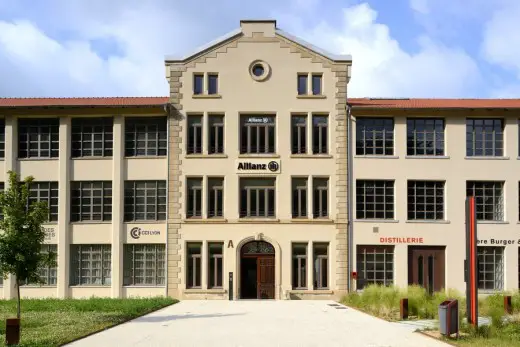
Built along the water’s edge
On the approach to Tarare, a small town close to Lyon, an imposing building testifies to the area’s industrial heritage. A factory built on the banks of the river, this disused building formerly housed the Turdine dye works – les teintureries in French – specialised in textiles finishing.
The history of this edifice seems to have written itself a new chapter largely based on the first, with its latest contemporary interpretation logically following on from its original incarnation. The trendsetting brand Ninkasi has recently relocated its brewery to the site, along with a distillery, restaurant, cafe and music venue. This has been the catalyst for developing a much larger-scale project incorporating business (business incubator) and commercial activities (sales outlet for local producers).
From the very beginning, water has been the common theme running between these two chapters of the site’s history. A driving force of 19th century industry, the extreme purity of the water in this area was, and is, much sought after, and is vital to both industrial processes, past and present.
The architects of the agency Pierre Vurpas et Associés have drawn out the power and strength of the building, set against a natural backdrop of vegetation, projecting an image and creating a lively atmosphere that remains respectful of its neighbours.
The Teintureries de la Turdine, the first chapter of the site’s industrial history:
The story begins in the 19th century when Scottish industrialists set up the first textiles finishing workshop on the banks of the Turdine in 1825, which they subsequently extended in 1856. Dyeing is an essential part of the textiles finishing process which requires extremely pure water. The availability of this water in the area also attracted other dye works to the region.
Indeed, at this time Tarare was an industrial town with a flourishing textiles and dyeing industry: mousseline, sponge, linens, cottons and then rayon, viscose and Tergal were all produced here, making it the French capital of curtain production before the industry underwent a rapid decline in the 1970s.
The building as it is seen today was built in 1905, after a fire destroyed the original edifice.
In 1947, a second fire destroyed half of the east wing. The building is therefore composed of two different types of construction.
The rebuilt east wing is entirely made of brickwork with a network of reinforced concrete beams and columns.
The west wing, which still corresponds to the original structure, has stone walls and a metallic structure separating the floors. Cast iron pillars support the beams composed of riveted flat and angle bars. Above these, narrower columns mimic the framework of triangular beams which support the concrete floor slabs which, even at the time they were first built, were pre-fabricated.
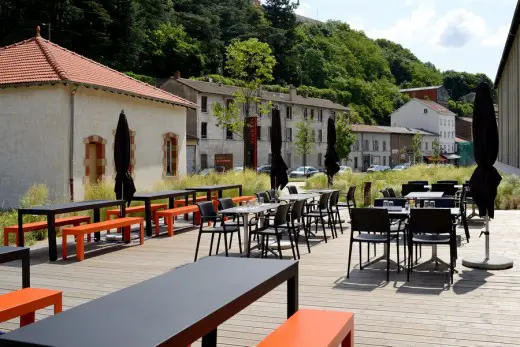
Rehabilitation – a new chapter in the history of Les Teintureries
After the decline of the textiles industry the site fell into disuse in 2006, it was decontaminated and the extensions were demolished.
In 2007, the agency Pierre Vurpas et Associés won the competition launched to rehabilitate the site.
A site that opens out onto the town
The first objective was to free up the surrounding areas to open the building out onto the town and give it renewed prestige. The perimeter wall was demolished and only the caretaker’s house which stands at the intersection between the roads and the entrance drive was kept. The former courtyard was turned into a meadow of flowers with a few larger trees, creating a poetic setting for Les Teintureries. A lightweight, metallic walkway runs along the length of the building, organising the passageways and ensuring the building’s accessibility. It forms a base which emphasises the slope of the land and reinforces the building’s foundation.
A striking symbol
To the east, the facade and a certain number of bays were removed to open up the building onto the river which runs the length of the building, under an archway at head height. The river is now out in the open and can be seen clearly from this vantage point.
Following this demolition work, the gutted building was covered in a new sheath of Corten steel, a material commonly used in contemporary industrial environments. This filter makes the inner-workings of the project visible, evoking the strength of machines and the work of men.
Respectful rehabilitation
The building is vast, 200m long with 6,500 m2 of floor surface over three levels. It is composed of two wings, built around a central body which projects forward slightly from the wings. The symmetry has been preserved and the building has been treated as a whole, playing on layers of repetition rather than on architectural details. Large, identical windows on the north and south facades create large open spaces with plenty of natural light and views across the town and the surrounding area.
The facades have been cleaned and restored, preserving the size of the openings and their original positions. The painted aluminium work matches the design of the old concrete framework, a structure commonly used in the 1950s but which no longer offers satisfactory levels of energy efficiency.
The roof has been restored using the same model of interlocking tiles as the existing roof, laid on ribbed bricks, themselves supported by a metallic framework.
The original entrance to the building, through which the workers passed morning and night, was such an essential part of the building that changing it was unthinkable. It provides access to both sides of the large open floors. The monumental staircase and handrail have been restored to their former glory, and the used or worn steps replaced. The two lifts, sheathed in expanded metal, are reminiscent of goods lifts, a nod to the building’s industrial past. The flooring respects the same grid pattern as in the original building, and the lights are lodged in coloured slots in the ceiling.
The east wing houses service-sector activities, such as the chamber of commerce and the local newspaper office, as well as a range of private firms. In this part of the building, the unfinished concrete structure has been left visible, and the acoustic correction and lighting are supplied from suspended expanded metal panels. The events venue to the east opens up onto a large terrace which overlooks the river.
To the west, Ninkasi has taken up residence in the original structure of the building. The first floor flooring has been removed to create the volumes necessary to set up the tanks surrounded by the beam support framework. The restaurant, cafe and music venue is located between the brewery and distillery with the glazed partitions providing clear views of the production facilities. The views of the brewery are truly spectacular. The decor is industrial, with tanks and stills contained within a metallic structure putting the industrial process on display. The setting is faithful to the Ninkasi brand image, neither overly cosy nor lounge bar, with its distinctive colours and raw materials – brick and concrete blocks – working together in perfect harmony with an industrial edge.
The brewery service areas are located in the most westerly part of the building and are marked by the presence of stainless steel storage silos for the cereals used for brewing, and the tower. This tower is wrapped in Corten steel, echoing the casing of the east facade. It is emblazoned with the red outline of a dancing figure – the effigy of Ninkasi herself.
A new space for work and leisure
The open views between the different areas dedicated to production and consumption create a lively, attractive space within the urban setting. The terrace acts as an extension of the cafe space and enlivens the large meadow of flowers which now borders the town’s high street. The site comes to life when the occupants and office workers arrive in the morning and at night with the activities offered by Ninkasi.
The Maison des Producteurs has been set up in the former caretaker’s house which has been newly renovated. It offers a sales outlet where local producers can sell their produce directly to customers with a view to developing good practices and a responsible economy.
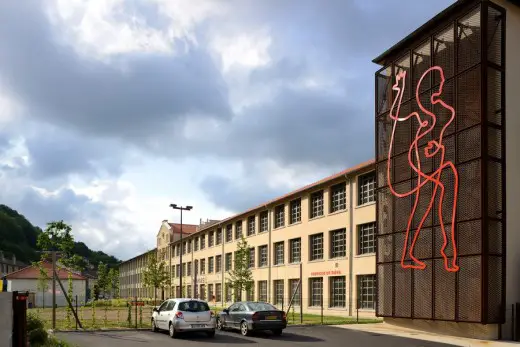
Rehabilitation – a sustainable development approach
Rehabilitating a building of this stature to bring it back to its former glory corresponds to a sustainable development approach. Choosing to rehabilitate a building is an environmentally sound approach from an intellectual, historical, technical and operational point of view, which affects the history, technique, construction and economy of a project.
By getting the best out of this space, the architects have met a considerable challenge: this disused industrial building with such immense potential has become not only the emblem of an urban transformation, but also the gateway to, and driving force behind this metamorphosis.
For the owners of Ninkasi, the brewery has brought together the full chain of operations: production, storage, bottling and labelling. The brewery supplies all the Ninkasi cafes (around ten in total), including the brand’s largest venue in Gerland, as well as retailers of all sizes. The brewery aims to produce 8,000 hectolitres per year and the distillery 12,000 bottles.
Les Teintureries – Building Information
Programme:
Modification of an industrial building to create a space for:
a brewery
a distillery
a restaurant, cafe and music venue
offices
a sales outlet for local producers
Client: Tarare town council
Project Manager: Pierre VURPAS et Associés Architectes
Scheduling, planning and coordination: Arpège Ingéniérie
Economist: Pierre VURPAS et Associés Architectes
Structural engineering: Tecbat
Fluid engineering: Setam
Electrical engineering: Setam
Acoustic engineering: Eai
Signs and signposting: Caracas
Health and Safety coordinator: Coo
Building control: Apave
Cost of work: €5.422m ex. VAT
Surface area: 7,916 m2 Gross Floor Area
Photographs © Studio Erick SAILLET and ©Pierre Vurpas et Associés Architectes for the worksite photos
Contractors:
Masonry and carcass work: DURON
Framework – Roofing Tiles – Sheet Metal: TOITURES BARSKI
Facades: CB RAVALEMENT
Aluminium work: BLANCHET
Blinds and shutters: CALLYBSO
Metalwork: BLANCHET
External and internal woodwork: THALMANN
Plasterwork – Paintwork – Drop ceilings – PVC flooring AUBONNET
Raised flooring: DENCO TECHNOLOGIE
Tiling and ceramics: RHODANIENNE DE CARRELAGE
Lifts: LOIRE ASCENSEURS
High and low voltage electricity: DUGELET
Heating – Ventilation: MOOS
External works: EIFFAGE TP
Main materials:
Painted facades for the central building and east and west wings
Expanded Corten steel (gable / tower)
Lacquered aluminium work (all exterior frameworks)
Lacquered venetian blinds (windows on the south facade)
Roof tiles (all old terracotta roof tiles replaced)
External walkways and terraces: lacquered metal structure and wooden decking
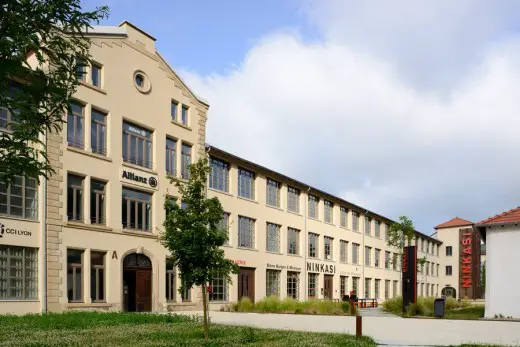
Les Teintureries, Lyon images / information received 211014
Pierre Vurpas et Associés Architectes
Location: Tarare, Lyon, France
New Buildings in France
French Architectural Projects
French Architecture Design – chronological list
French Architect Offices – design firm listings
Paris Architecture Tours by e-architect
Montpellier Buildings
Pierre Vives Project
Zaha Hadid
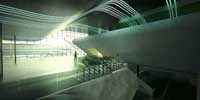
picture from architects
Lironde Gardens
Christian de Portzamparc
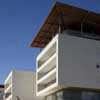
photo from architect
ZAC Port Marianne development
Du Besset-Lyon Architectes
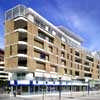
photo from architect
Nimes Architecture
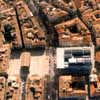
photo : Nigel Young, Foster & Partners
Comments / photos for Les Teintureries, Lyon page welcome
Website : Lyon France
